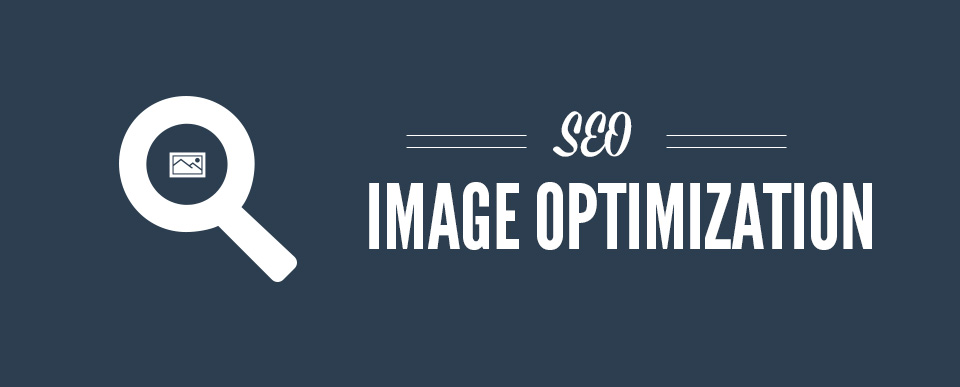Any images posted by a business related to retail and consumer goods should be especially mindful of optimizing those images for organic search. But there are many other image categories that will benefit from better optimizing. For example, any business that relies on the reputation of individuals should take similar steps. Professional groups such as law firms and medical practices should expect searches of individual lawyers and doctors by name for portraits or profile pictures. Venues and destinations are also topics that consumers want to see images of. And images of finished work product such as construction, fences or interior design are frequently sought by consumers to gauge the quality of a firm’s work.
Since search ranking is often neglected and because there are so many more results presented on image search results pages, Google Images can help a local business or its products and services get found.

Why are images a huge part of SEO?
As people started incorporating images and videos into their content Google started ranking for them. After all, a third of all searched performed in Google are for images.
So much of the content we consume depends on the image at the top of the page. I click on articles sometimes only because the cover image looks interesting. We read books based on the image on the cover. We stay longer on websites that are well designed. Design plays a huge role in the online economy and people are constantly looking for better images to use for their websites.
Also, Google doesn’t penalize websites that use duplicate images. In fact, often the websites that do the best job at image SEO, their images get ranked higher than the same image on the original site. So it’s a free for all, unlike content you can duplicate images as much as you like.
Ranking for Google Image Searches
The main goal of any image SEO strategy should be to have images rank high in Google search results, to bring the most traffic back to the site. You might say that this is most relevant for businesses that sell visual products (decorators, remodelers, crafts people) or destinations (hotels, Airbnb) but it’s not true.
Any business can use image SEO to increase their traffic. Let me give you an example.
Let’s say a marketing agency creates a stunning infographic about inbound marketing. They make put a lot of cool statistics in there and nice tips for anyone that is interested in social media or growing their business. Then they put it on their site and wait for the traffic to come rolling in.
If the agency optimises their infographic for SEO and adds all the needed elements to the infographic then people will begin finding it when they do an image search for “inbound marketing”. When other companies start publishing their infographic that image will get ranked higher and will begin to bring more traffic to that agency’s site.
Here are some tips to make sure your images are optimized to take advantage of search queries performed in Google Images:
Optimize image data, labels, tags and descriptors for better Google indexing and ranking
Metadata, labels and descriptors are all used by Google for indexing purposes, so they’re important in identifying for Google what your image is and the context in which it is used. Better indexing means better ranking in search results. Below are the main labels, tags and descriptors that may be customized whenever you upload an image for display on your site and that you should pay attention to for ranking in Google Images.
- Image file name. As illustrated above, file name is the most basic description of your image that is searchable. Make the name count.
- Alt tags. Alt tags are HTML attributes used to describe your image and are used in place of the image when it doesn’t render or isn’t displayed. For example, the text would be displayed by a screen reader for the visually impaired, when images are disabled in a browser or when the image can’t be decoded. An alt tag is an alternate display of text in place of the image. Here’s a more technical explanation by Yoast on how to use alt tags to identify your images.
- Captions. Captions are typically the title or description that is displayed with the image.
- Descriptions. Description is a field that allows for a full explanation of the image and that may provide additional details including links. Descriptions are displayed when an image within a post or on a site is clicked on and opened in a separate window.
- Contextual information surrounding the image. Google determines relevance of images to search results by the context of everything else around them including text content, other images, image sitemaps, page title and page URL. So optimize them all and keep your page messaging unified and consistent.
Optimizing your Images
How do you optimize your image for Google’s image search algorithm? Here is a comprehensive list of all the elements that you need to have for your image:
1. Image file name – needs to relate to your topic and to relate to what the image is showing.
2. The alt attribute – this is the way that search bots are able to find your image, helping Google understand the context of the destination page
3. Image caption – this is the little description that goes underneath your image. If your alt attribute is long you can put some of it in the caption. It’s been shown that captions do help with search ranking. Believe it or not, sometimes the image caption becomes more important for Google rankings than the alt attribute.
4. Page title – Google looks at how the page title is related to your image
5. The page URL – the image description/name/caption/attribute have to relate to the page URL to rank well
6. Surrounding text content – Google looks at the text that is placed before and after the image.
7. Image engagement – if your image is engaging and people click on it then Google will actually move it up in the search results. This is why it’s important to use engaging, relevant and popular images.
8. Image dimensions and size – use standard sizes and dimensions of the image to get the best results. Google tends to show the standard ones and not the irregularly shaped or the super small or gigantic ones (except for when you type in wallpaper into the search).
9. Image relevance – Google will rank your image higher if what it is showing is related to the content on that page
10. Web page ranking – If your page ranks really well on Google then there are greater chances that the images on that page will be shown in the top of the image results.

Images that enhance a user’s experience are ranked better by Google
Google values relevance and quality in returning search results and thus, user experience feedback is a strong signal to Google for ranking purposes. Thus, the more popular an image and the more clicks it gets, the higher the ranking. Below are a few tips for providing a good user experience with your images:
- Make sure that your images are of good quality and are appealing. That might seem obvious, but go on LinkedIn and see how many bad profile pictures people post of themselves. A survey by Shotfarm, which distributes product images for manufacturers, found that consumers say product descriptions and images are critical to their decision-making, with the vast majority of consumers saying they are important (30 percent) or very important (63 percent). In other words, consumers extrapolate the quality of an image to that of the product or service. So better pictures boost clicks which will boost ranking of that image.
- While overly large image file size hurts page load time, reducing the file size does not mean you have to sacrifice quality. There are ways to strip out unnecessary data and many online tools that can help optimize images for your website. Try JPEGMini, PunyPNG or Kraken.io.
- While Google doesn’t take the same liberties in cropping images in search results that they do with Google profile pics, it remains important to understand how the image will look in search results. Images that don’t fit the more standard image ratios, such as 16:9 or 4:3, tend to be resized to fit those dimensions. Also, images such as large group pics that lose any valuable detail when reduced to thumbnail size will likely fail to draw attention or clicks.
- Stock images are usually easy to identify and often feel fake or insincere. As such, they can hurt the thing that make local businesses most appealing: personalized and quality service that is genuine and built on relationships.
How do you create an image SEO strategy?
Where do you begin? What do you do?
The first step is to discover which of the current keyword searches that you are targeting with your content actually have image boxes. Google shows images on regular searches 12.5% of the time, so if one of the keywords you are targeting is on that list the idea is to optimize your images to try to get into that search result.
A great tool to use for this is Moz’s Keyword Explorer that shows you which specific keywords you’re targeting have those image boxes. That means you don’t have to spend a month in the SEO dungeon manually searching every single keyword from the bazillion content pages you have… what a relief.
Prepare your team for your image SEO strategy
A key part of your strategy should be getting your team up to speed on everything that you want to accomplish. Inform the team members that upload images on your site of the overall strategy, and teach them a few things you want them to do with the image. For example, tell them what caption, alt attribute, and size of the image you would like them to use.
____________________________________________________________________________________________
We provide the best quality backlinks as ever, pls contact us qualitybacklink.net@gmail.com ; Skype: qualitybacklink






